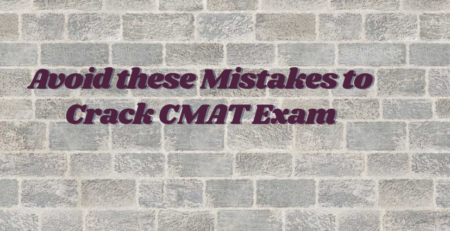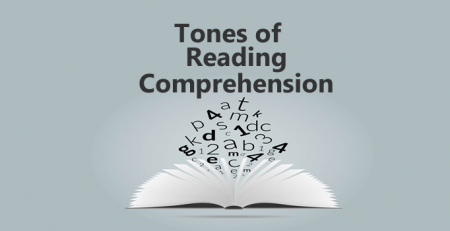CMAT Exam Pattern
CMAT Exam Pattern
What is CMAT Exam?
Common Management Admission Test (CMAT) is a national-level entrance exam for admissions for over 10000 dream b-schools all over India conducted by National Test Agency(NTA), for admissions to MBA & other Post-Graduate Diploma courses in Management. Every year 50,000 aspirants give this computer-based online exam from different parts of the country. The CMAT exam is conducted every year in the month of January. CMAT exam scores are accepted by various B-schools, all over the country. So, it is time to start planning for the preparation of the CMAT exam.
Crack CMAT with Mentors from top B-Schools
The exam has 4 sections. To prepare a strategy you must know the exam pattern and syllabus for the exam CMAT is a management aptitude test, and its syllabus and pattern are similar to other Mba entrance exams. In this article, you will find all about CMAT preparation including, the exam syllabus, pattern, question papers, best books for IIFT, and section-wise strategy. Now, there is no specific formula that will ensure that you crack a particular exam. However, forming a strategy to prepare for it, will ensure a high probability of clearing the admission cut-offs.
CMAT Exam pattern
The CMAT is an online exam conducted in two sessions from 9:30 am to 12:30 pm and 2:30 pm to 5:30 pm. CMAT question paper contains 100 MCQs with four options each to choose the right answer from. Here is the CMAT exam pattern. Each section in CMAT consists of 25 questions of 4 marks each. There is a negative marking so the candidate may answer the questions carefully. For each right answer, the candidate gets 4 marks and for each wrong, it gets 1 negative mark. No deductions for unanswered question
Language Comprehension
Reading Comprehension
Critical Reasoning
Vocabulary and Para jumbles
So, Vocabulary includes Para-jumbles, Antonyms & Synonyms, and grammar (idioms & phrases, sentence correction, fill-in-the-blanks, Facts, Interference & Judgement, sentence completion, analogy, etc). It consists of a group of sentences that have been jumbled up. The goal in these types of sentences is to rearrange the sentences in the original sequence. In para-jumble questions, you will be given a paragraph made of four to five sentences whose original sequence has been changed and you have a few minutes to figure out what that original sequence was.
CMAT Exam strategy
Following is a strategy to help you prepare well for this exam:-
1) Past Papers:
- This is the first step that you should take while preparing for CMAT. Solving previous years’ papers will give you an idea about how the actual paper is going to be. You will be introduced to all types of questions, ranging from simple ones to complex.
- Once you take this step, you will get a good idea about the pattern, difficulty level, and distribution of the different questions. You can then use this for prioritizing all the different topics in your prep schedule.
Here is the list of top colleges accepting CMAT scores
2) Schedule:
- Make a proper schedule for your studies and follow it. This will ensure that your progress in your studies is steady.
- However, do not forget to relax once in a while. Be a bit flexible in your schedule. Take breaks, and if you relax too much, compensate for it by putting in extra time. You do not want to study rigorously for months and burn yourself out before the exam.
3) Quantitative Aptitude:
- Your focus should be on Arithmetic and Modern Maths. Make sure that your basics are strong and that you are familiar with all the different types of questions from these two topics. For DI, focus on bar graphs and pie charts.
- Apart from all this, be well–versed in other topics as well, such as Algebra, Geometry, Mensuration, Number Systems, Trigonometry, etc.
- Keep revising tables, squares, cubes, percentage values, etc. for an increased calculation speed. Also, Keep revising formulas on a regular basis. While revising formulas, keep making notes on the different applications of these formulas in the questions.
Learn more about CMAT DI and GK
4) Language Comprehension:
- Focus on Para jumbles, Fill in the blanks, Synonyms and Antonyms, Idioms, Sentence Correction, Phrases, and others. Reading Comprehension passages are usually of a moderate length in CMAT and should be a regular part of your preparation.
- After solving past papers, gather all the new words that you find in them, and understand and memorize them. This will increase your vocabulary.
- Read magazines daily. This will help you in Reading Comprehension, as well as in General Awareness.
- Please Read Novels/Books daily.
- Read an English Newspaper daily.
5) Logical Reasoning:
- Topics to focus on are Arrangements (Linear, Circular, etc.), Statements and Assumptions, Cause & Effect, Statements & Conclusions, Coding/De-coding, Missing terms, and Puzzles. Be familiar with the other topics as well.
- Practicing Logical Reasoning questions regularly is the best way to ensure progress in your speed and accuracy with these questions.
- Also, Practice intensively
For more tips and tricks for data interpretation and logical reasoning click here
6) General Awareness:
- CMAT has a negative marking. Therefore GK is not a section that you can take lightly. A wrong answer may cost you a mark and may affect your chances of clearing the admission cut-offs. However, if prepared properly and attempted carefully, General Awareness can be one of the most scoring sections.
- Topics to focus on, for Current Affairs, are recent Business events, Environment, International Affairs, Famous Awards & Prizes, Sports, Automotive Sector, Entertainment, Finance, Politics, Social Issues, Government & Policies, Books & Authors.
- From the past papers, figure out the commonly asked topics/subjects from Static GK. Make yourself familiar with these facts. This might include famous politicians, Indian History, States and Capitals, etc.
- While studying GK, make sure that you approach it topic-wise. Do not just gobble up random facts. Approach it topic-by-topic and keep making notes for each topic.
- Make sure that on the day of the exam, you are well-versed with the current affairs of the previous 6 months.
Get some free study material for CMAT here
7) Speed:
- Make sure to keep increasing your solving speed, while preparing for CMAT. To do this, set a timer while solving questions. It’ll give you a fair idea of the time taken to solve each type of question. You can then gauge and improve your speed respectively.
- The above tips will help you to develop a proper strategy for the exam. Follow these tips and increase your scores.
All the Best!!
Related Links:













